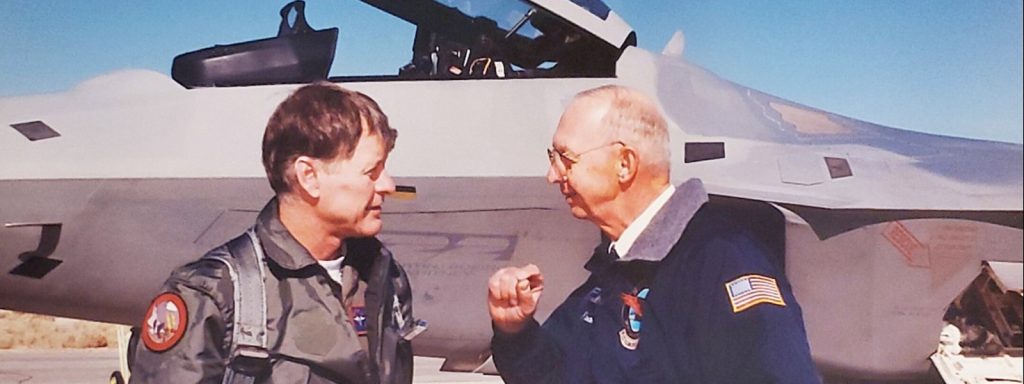
With a long and illustrious list of accomplishments, the career of Frank Gillette was as powerful and high-flying as the fighter jets that rely on his engine designs. And his success story took off in Gainesville, where he graduated from UF in 1962.
“He just loved his job and appreciated the education he got at the University of Florida,” said his wife, Jane Gillette. “It served him well.”
He enrolled at UF after seven years in the Navy Reserves, driven to study rocket science by the Soviet launch of the Sputnik satellite in 1957. Though he struggled with dyslexia, he now credits the condition for improving his engineering skills by giving him a penchant for caution and an eye for small details.
During a 36-year career at the aerospace manufacturer Pratt & Whitney, he rose to become the Director of Advanced Military Programs while designing engines that continue to be used in fighter jets worldwide.
Gillette had roles in designing engines that have been used in the F-15, F-16, F-22, and SR-71 planes, as well as the Space Shuttle and the Atlas V rocket. Specifically, he designed the combustor and turbine modules for the F100 engine, which powers the F-15 Eagle and F-16 Falcon jets; designed components of the J58 engine, which was used in the SR-71 Blackbird, which still holds the record for the fastest crewed airbreathing aircraft; and contributed to the development of the thrust chamber of the RL10 engine, an upper-stage rocket booster used by the Atlas V to carry satellites into space.
His signature achievement, however, came after he was assigned to the development of the F119 engine as Pratt & Whitney’s project lead. From the project’s inception all the way to when it reached full-scale operational capability 15 years later, Gillette led the process of design, development, and manufacturing. The F119’s ability to go supersonic without using afterburners (supercruising) increases flight range, and the engine delivers almost 22% more thrust with 40% fewer parts than its predecessor, the F100. Today, every F-22 Raptor is equipped with an F119 engine, which allows the plane to supercruise at speeds up to Mach 1.8.
He said that one source of his deep passion for engineering is the sense of actually being able to see tangibly meaningful results.
“You’re actually working with things that are gonna go do something,” he said.
After his retirement, Gillette continued serving as a consultant with Pratt & Whitney for decades. Driven by his strong belief in mentoring future engineers, he also taught propulsion courses as a volunteer at the United States Air Force Academy, making the trip between Florida and Colorado several times each semester to teach for free. The USAFA has since created the position of Frank Gillette Propulsion Researcher with an endowment from Pratt & Whitney.
Another way he showed his commitment to helping raise the next generation of engineers was through his donation to the MAE Student Design Center at UF. He attributed this generosity to his gratitude for the university and his hope that students will get hands-on experience there.
“That’s how I really got going, and so if it was good enough for me, it should be good enough for the rest of those guys,” he said.
As a member of the College of Engineering Dean’s Advisory Board, he was instrumental in selecting Cammy Abernathy as Dean in 2009.
“It not only was rewarding, it was fun,” he said of his service on the board and his continued involvement with UF MAE.
He also served on the MAE External Advisory Board and earned a Distinguished Alumnus Award in 2010 “for his technical contributions as an aerospace engineer and for his longstanding support of the university and our department.”
